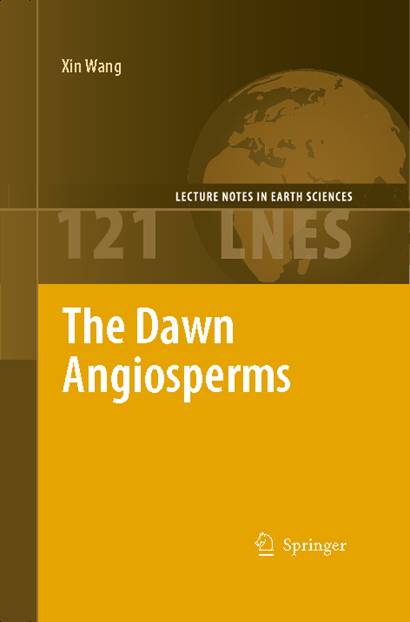The origin of angiosperms has been a perplexing for botanists for long time. Despite efforts many hypotheses remain speculative due to lack of fossil evidence support. In a new book The Dawn Angiosperms to be published by Springer, Dr. Xin Wang at the Nanjing Institute of Geology and Palaeontology, Chinese Academy of Sciences gave a new solution for this lasting mystery.
Starting from zero, Wang first examined the existing criteria identifying fossil angiosperms, selected a stricter one for his application. After documenting 10 species of 8 genera of fossils plants from the Early Cretaceous and Jurassic of China and Germany, Wang confirmed the angiospermous affinities of these plants. Based on these fossil evidence and current progress from other fields of botany, Wang gave a new interpretation of the origin of carpel, flowers and angiosperms.
In the book Wang proposed to separate the traditional carpel into two components of different nature, one is placenta, equivalent to an ovule-bearing shoot, and the other is carpel in new sense, equivalent to a leaf. This separation ends the lasting debate on nature of carpel between two traditional schools. The shoot nature of placenta helps to relate itself with the secondary shoot in ancient gymnosperms. This correlation helps to solve the relationship between angiosperms and gymnosperms, among gymnosperms, as well as among angiosperms. It also paves the road for a more rational systematics of angiosperms. This treatment has gained favors from various fields of science, including plant morphology, anatomy, development, developmental genetics, and cladistics.
The book marks a new step approaching the mystery of angiosperm origin. Despite many problems ahead, the new book brings related sciences one more step closer to their targets.

Download:
